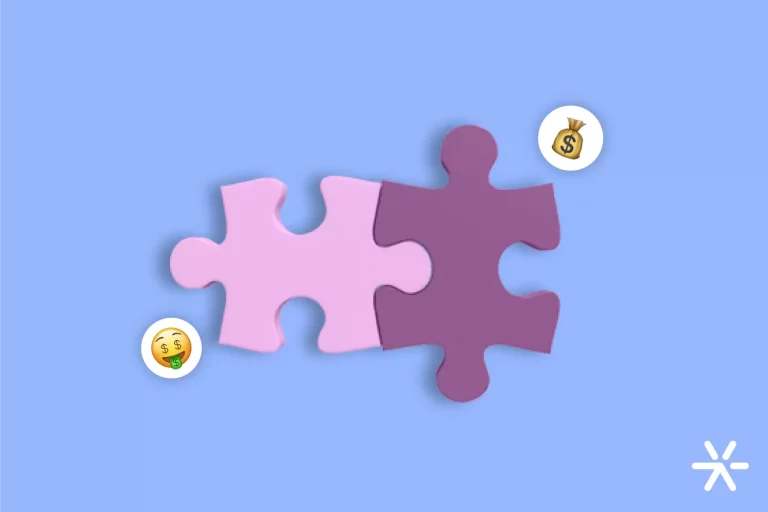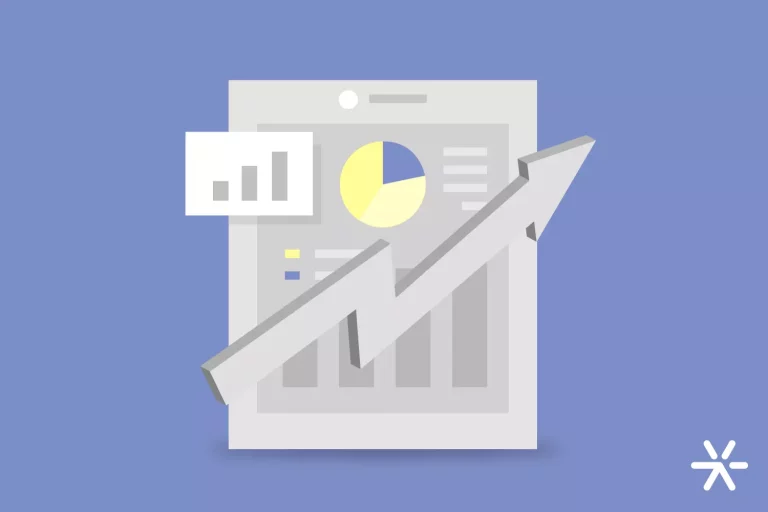How to Control Your Company’s Churn Rate
In this complete guide to churn rate, we’ll explain what this metric is, how to reduce it, the negative impact it can have on companies, and how to closely monitor it with integrated management.
Let’s dive into the content?
What Is Churn Rate?
The churn metric monitors the revenue or customer losses your company experiences.
It’s related to customer turnover, and you should define a specific time period to measure this data.
How to Calculate Your Churn Rate
To calculate the churn rate, you first need to define a period of analysis and access data from that time frame.
Here’s the formula to calculate churn rate:
Churn Rate = (Number of customers lost during the period / Total number of customers at the start of the period) x 100
What’s the Difference Between Churn and Revenue Churn (MRR Churn)?
You can monitor two types of churn rate: customer churn and revenue churn, also known as MRR churn.
The first represents the number of customers lost, and the second refers to the revenue lost due to those cancellations.
Understanding Revenue Churn or MRR Churn
MRR stands for Monthly Recurring Revenue.
So, the MRR churn metric focuses on the impact of cancellations on your company’s monthly recurring revenue.
To calculate MRR churn:
MRR Churn = (Average monthly value lost from cancellations / MRR for the month)
You can also include downgrade requests in this calculation, not just cancellations.
Why Should You Measure Churn Rate?
All strategies and metrics that track the customer after a purchase or subscription are important.
Churn rate is one of the key indicators that helps us understand the post-sale scenario.
This metric is even more critical for companies that operate on a subscription or recurring revenue model.
It helps assess customer satisfaction, revenue predictability, and the financial health of your business.
If you only track conversion rates and new customer acquisition without monitoring churn, you might misread your performance.
After all, it’s no use gaining a large number of new clients if many are also leaving — or even more than you’re gaining.
🔗 Also read: ERP Systems – What They Are, Advantages, and How to Implement Them
Is There an Ideal Churn Rate?
The ideal is for your churn rate to be as low as possible.
It’s very unlikely that your churn will ever reach zero, but to maintain financial health, the number of new customers must always exceed the churn rate.
To set a benchmark, you can compare your churn rate with companies in the same industry.
What Causes Customers to Leave and Increase Churn?
Besides calculating and understanding your churn rate, you also need to identify the reasons behind customer cancellations — especially if your churn is high.
Here are some of the most common causes:
1. Delivering Less Value Than Promised
Do your salespeople have a “close-at-all-costs” mentality?
That could be hurting your post-sale experience.
If what was promised during the sale doesn’t match what’s delivered, frustration is inevitable.
Investigate your sales arguments and shift that culture through training and proper sales materials.
Dissatisfied clients in this scenario often feel deceived and spread negative feedback to others.
2. Lack of Attention to Detail
Details matter — not just in the product or service, but throughout the entire customer journey.
For example, a client might be happy with your bank, but if the app constantly fails or support is always hard to reach, that could drive them to cancel, even if the core service is good.
This is even more critical when the customer pays a higher price, where expectations are greater.
3. Customer’s Needs Have Changed
Sometimes, the issue isn’t with your company — it’s with the customer.
Their priorities, budget, or needs may change, and your product or service may no longer be the right fit.
This too leads to churn.
4. Business Closure
In B2B markets, contract cancellations can happen when the client’s company, department, or project shuts down operations.
While it increases churn, it’s outside your company’s control.
Disadvantages of a High Churn Rate
If your churn rate is too high, you’ll see impacts beyond just financial health.
Other negative consequences include:
Difficulty Securing Partnerships or Expansion Contracts
It’s hard to gain trust for partnerships and investments when your company lacks sales predictability and sees frequent client turnover.
Low Scalability of Products or Services
Without loyal customers, your sales team is constantly trying to “plug holes” rather than grow.
To scale, you need not only new customers but also to retain current ones.
Damaged External Brand Perception
If customers are canceling due to dissatisfaction, your brand reputation will suffer.
And that bad experience won’t stay private — unhappy clients often share their frustrations with others, damaging future sales.

Demotivated Employees
High churn affects internal teams too.
Your staff must work harder to attract new clients and deal with unhappy ones, which lowers morale and performance.
🔗 Check out: Build a Sales Cadence Flow and Get More Meetings, Proposals, and Deals
How to Reduce Churn Rate? 10 Practical Tips
Want to improve your churn rate?
Here are 10 actionable tips to increase customer retention:
1. Invest in Customer Success
Customer Success ensures clients get the most from your product or service post-sale.
These professionals act as consultants, reducing friction and guiding clients to better experiences.
2. Be Customer-Centric
Put the client first from the start.
When your sales process is tailored to your ideal customer’s needs, it aligns expectations and improves the post-sale experience, reducing churn.
3. Treat Feedback as an Opportunity
Want to understand why customers cancel? Ask them.
Gather feedback and act on it to improve — and don’t wait until churn happens.
Survey your current customers too.
🔗 Learn more: Customer Pain Points – 20 Questions to Identify and Tips to Solve Them
4. Use Tools That Enable Fast, Personalized Support
Support is a major factor in customer experience.
Clients want speed and efficiency — and tech tools can help.
Use chatbots, virtual assistants, live chat, and multichannel support via website, app, phone, social media, or WhatsApp.
5. Anticipate Customer Exit Signals
With access to your clients’ data, you can also think about strategic behavior monitoring actions and anticipate potential cancellations.
For example, some signs that something may be wrong include a large number of support center contacts or even an extended period in which your client does not access your system or website.
6. Provide an Excellent Client Onboarding
Onboarding is a training and full explanation of the solution provided to the client right after the purchase or contract.
Investing in this kind of process and in support materials helps align expectations, clarify doubts early on, and encourage customers to explore all the features available.
7. Analyze the Behavior of Your Best Clients
Identify your most satisfied clients and analyze how they use your product or service.
Use this information to enhance the other improvement strategies we’ve shared in this article.
8. Create a Best Practices Guide
Another type of support material that enhances customer experience is a best practices guide.
In this kind of document, you share with the client everything they need to know to get the most out of your product, service, or solution.
🔗 You may also be interested in: Brand Persona vs. Buyer Persona – Differences and How to Develop Each One
9. Train Your Clients Regularly
You don’t need to wait for a question to arise, for behavior to change, or for new clients to onboard before providing training and support materials.
Include this type of strategy in your regular communications. Ask your customers what they would like to understand better and continuously prepare training materials.
10. Recognition
In the B2B market, another highly effective strategy for customer retention and encouraging full use of your solution is recognition—through awards, success cases, and event participation.
For example, if you are a company that sells CRM software, you can highlight clients who achieved the best results in improving their sales processes, recognize and reward them, and share their success stories with other clients.
The Importance of Constantly Monitoring Churn Rate in Companies
The churn rate represents not only the loss of customers but also many other harmful impacts on the company, as we’ve seen.
Use our tips to prevent these issues and remember to foster a culture among your sales reps that focuses not only on acquiring new clients but also on retaining those you’ve already won.








